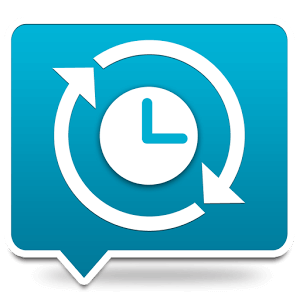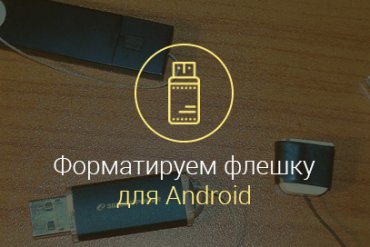There are situations when resetting the data stored on your device and rolling back to the manufacturer’s settings is simply necessary for Android to work. The reasons may be any, but the result is always the same – irretrievable loss of all available data that have been lovingly accumulated for a long time. Therefore, it is quite obvious the need to backup (backup android firmware) photos, contacts, installed applications and other things. To help you avoid a long and exhausting search for the necessary information, we want to offer you detailed material on how to backup the system, and further restore it.
What is a backup, and in what cases it is needed
Surprisingly, but not many people know about the ability of the system itself to backup android, and if necessary, to save all your existing content. It is quite clear that in the work of any system is possible failure, which can occur due to clutter, for example, and as a result – the inevitable deletion of data. Or after buying a new phone, you will need to transfer data to a new smartphone. Now you will be able to cope with the standard means, without resorting to the installation of special applications.
How to back up and restore using your Google account
 It is well known that Android and Google are one and the same. This integration makes it possible to save backups in the cloud, and easily access them when you need to restore the system. What we need to do for this:
It is well known that Android and Google are one and the same. This integration makes it possible to save backups in the cloud, and easily access them when you need to restore the system. What we need to do for this:
step 1. To synchronize with your Google account, find “personal” in the settings, then “accounts”, and then Google.
2nd step. Select your account, check all the boxes.
step3. Go to settings, then “personal”, then “backup”, and finally “reset settings”. Check the fields “data archiving” and “auto recovery”. Preliminary check the account with which we worked (see the 1st step). It is important that it was specified in the field of the backup account. In the synchronization section, click the “Synchronize” button. To restore the saved data, log in to your Google account from your phone (by “data” we mean all passwords, wireless network settings, and previously installed applications).
Immediately after the settings have been reset to factory defaults, or when you connect an old account on a new device, the system should download all data from your account, make sure you have an internet connection in advance.
It’s worth noting that this saving applies to anything related to Google services. That is, if you have reached the last level of a game at great cost, you may not be able to return to it. During recovery, we delete those applications from the too long list of applications that you will no longer need.
If you have applications that are not connected to the Google server, then backup and restore are performed in other ways.
Using standard ADB tools
Step by step:
- Enable USB debugging on Adnroid;
- Download the proprietary program (version 3.21.35 and higher) from the ADB RUN website;
- Install the driver on PC (if it was not installed earlier);
- USB cable
Create a backup copy:
- Run Adb Run, select the Backup menu;
- Select the first item “Adb Backup”;
- Take your android smartphone (tablet) and press the button “create backup (password is not required).
Restore from backup:
- Choose “Adb Restore”;
- Press “restore data” on your Android device.
Using custom Recovery (root)
To use this method, you need to understand that Recovery must already be installed, because the very creation of a backup can not be called a backup, it is rather the creation of a whole image of the present state of the firmware.
- After installing Recovery, enter it;
- Choose “Backup and Restore” from the menu item
- Followed by the menu item “Backup” (to create a backup)
- To restore, select “Restore”.
Online Nandroid Backup (requires root)

Despite the name, unfortunately, nothing is saved in the cloud. The program has no graphical interface, so we will act from the terminal. This type of backup is designed specifically for those who are already tired of rebooting to Recovery to perform Backup, as well as to create a snapshot of the current state of the entire system and what is already installed in it.
Using DataSync (root)

This program will be good for backing up existing applications and quickly transferring them to another device. However, if your goal is to create archival copies of the applications themselves, not just the existing data and settings, then this application is not worth using.
OBackup (root) features

Backups are created similarly to ONB (the third way), only in this case we see a graphical and intuitive interface, and a means of sending the backup to a cloud disk.
Titanum Backup (root)

Titanum Backup is probably the most convenient and flexible quality backup option. Although this method does not perform a snapshot of the current system state, it backs up all user and system applications, as well as their data. If you are planning to switch to another firmware and then restore everything you need, we recommend this method as much as possible.
Helium (root/root)

An efficient tool to perform android backups. The principle of operation is based on ADB, but with the ability to select the application for which a copy is created
(The application does not work on Motorola). In this case it is possible to work without root rights, in this case you need to connect the android to a PC. So, step by step:
Download free Helium from the official Google Play app store
In the absence of Root rights, download and install the add-on on PC. It is possible to install drivers on the computer (for non-Root devices) available on the download page.
Creating backup in Helium on rooted devices
- Launch the application;
- Refuse the offer to log in to Google Disk, because this function works incorrectly (it copies but restores only in the paid version);
- Save backups using internal or external memory. To create them, select the necessary applications in the “backup” section, press the button to start the process, choose where we will save the data.
The recovery process is also very simple.
Creating a backup in Helium on non-rooted devices
- Everything basically looks the same as in the previous case, only with some caveats: After downloading and installing the add-on on your computer, run it;
- Turn on USB debugging on the android;
- Launch
- The rest of the steps are the same as for root.
We hope that our material will be useful to you, good luck!










